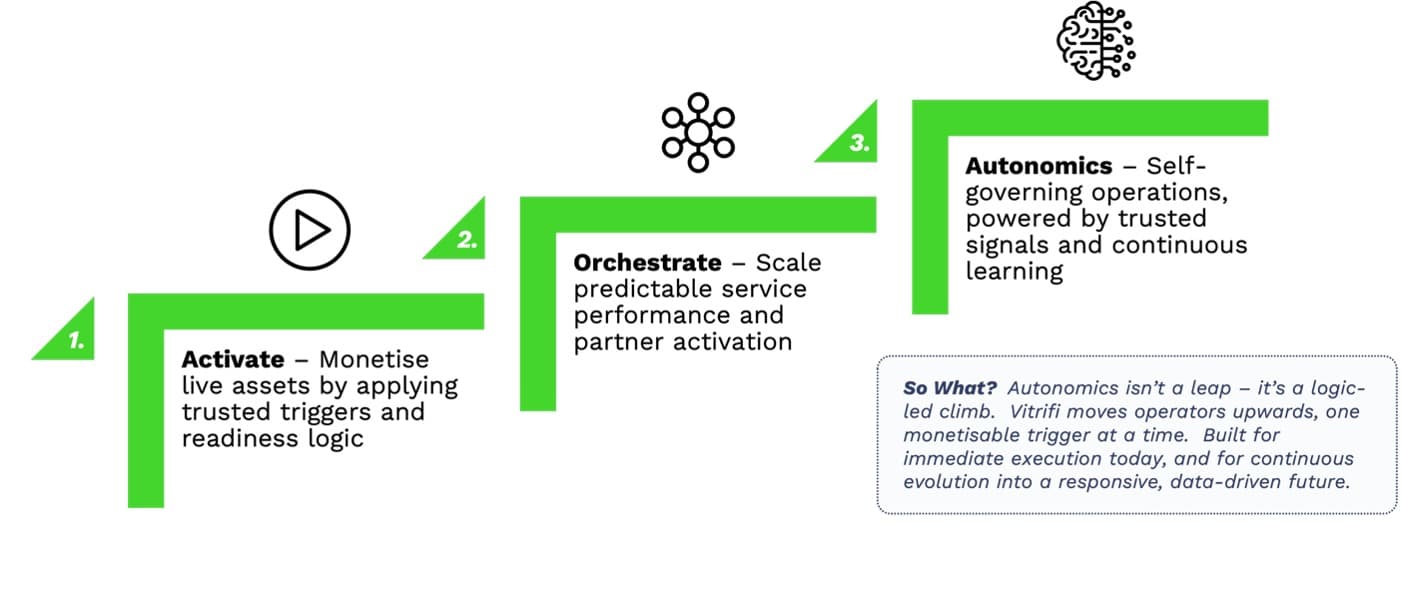
The Cost of Delay: Why Manual Provisioning Still Erodes Fibre Economics
Quantifying the hidden drag of slow service activation
Karen Burr, Chief Growth Officer
24 July 2025
Fibre is no longer an aspiration – it’s reality. But in a market where consolidation is accelerating and investors expect faster returns, operators must re-examine how value is created.
The infrastructure is installed. But that isn’t the finish line – it’s the start.
The Reflexive Network
A reflexive network doesn’t wait for manual intervention to generate revenue. It:
Activates trusted triggers
Orchestrates service workflows
Powers continuous scaling and automation
This creates the foundation for advanced orchestration and predicted operations.
Three Principles for a New Playbook
To transition from installed networks to reflexive, scalable operations, operators should focus on three principles:
Trust readiness signals. If operators can’t rely on operational indicators, no level of automation will compensate.
Avoid the rebuild trap. Replacing systems is expensive and slow. Overlays can enable revenue realisation without disruption.
Measure activation, not just deployment. Coverage maps show potential. Activation metrics prove realised value.
The Path Forward
The operators who thrive over the next five years will be those who move from infrastructure that is merely installed to infrastructure that is instinctive – where every signal creates value automatically.
Because whether in the UK, Europe, APAC or the US, the question isn’t whether networks are live. It’s whether the business model is ready to scale.
The diagram below illustrates how operators can climb from manual operations to reflexive, self-governing networks – proving ROI early whilst building towards long-term readiness and predictable returns.

This is Part 5 of 5 in the Fibre Monetisation series. You can read the full series on our insights page.